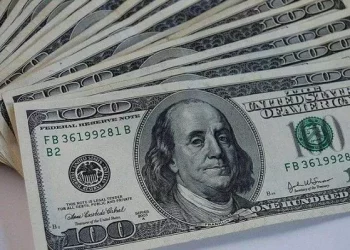The strength of a nation’s currency is a matter of critical concern for economists, policymakers, and businesses. A stronger dollar can yield various consequences, both positive and negative, for a country’s economy and its citizens. In this article, we will delve into the impacts of a stronger dollar on different stakeholders. The question at the heart of this analysis is: “Who is hurt by a stronger dollar?” Let’s explore this question and the various dimensions of its answer.
Exporters Face Challenges
One of the most immediate and direct effects of a stronger dollar is its impact on exporters. When the dollar strengthens, it becomes more expensive for foreign consumers to purchase goods and services from the United States. This increase in the price of U.S. exports can lead to a decrease in demand for American products abroad. As a result, exporters may find it harder to sell their goods and services in international markets. For them, it is clear: who is hurt by a stronger dollar.
Multinational Corporations Feel the Pinch
Multinational corporations often operate in multiple countries and deal with various currencies. When the dollar appreciates in value, it can negatively impact the profits of these corporations. A stronger dollar reduces the value of foreign earnings when converted back into U.S. dollars. This can lead to decreased profitability and stock market performance, which can be a concern for shareholders and investors. Hence, who is hurt by a stronger dollar extends to include not only corporations but also their stakeholders.
Agricultural Producers Experience Headwinds
Agriculture is a vital sector in the United States, and a stronger dollar can be a significant blow to this industry. When the dollar rises in value, it becomes more expensive for foreign buyers to purchase American agricultural products. As a result, U.S. farmers may see a decline in exports, which can lead to lower prices and reduced income. This situation can be especially challenging for rural communities and agricultural regions, making it clear that who is hurt by a stronger dollar includes those dependent on agriculture.
Tourism Takes a Hit
The tourism industry is another sector that feels the impact of a stronger dollar. As the dollar appreciates, foreign tourists may find it less affordable to visit the United States. This can lead to a decline in the number of international visitors, affecting businesses in the hospitality and tourism sectors. Hotels, restaurants, and attractions may experience reduced demand, impacting their revenue and employment. In the context of the tourism industry, who is hurt by a stronger dollar includes not only businesses but also employees and local economies.
Manufacturers Struggle with Competitiveness
Manufacturers are also among the stakeholders who feel the adverse effects of a stronger dollar. When the dollar is strong, it can make imported goods cheaper, which, in turn, can reduce demand for domestically-produced goods. This can lead to a loss of competitiveness for U.S. manufacturers, as their products become relatively more expensive both in domestic and international markets. Manufacturers may find it challenging to maintain or grow their market share, which can have a ripple effect on employment and the broader manufacturing sector. Thus, who is hurt by a stronger dollar in this context extends to include manufacturing employees and the industrial base.
Emerging Markets Face Capital Outflows
A stronger dollar can have a significant impact on emerging market economies. When the U.S. dollar appreciates, it can lead to capital outflows from these markets. Investors may seek better returns in the United States due to higher interest rates or the perception of reduced risk. As capital flows out of emerging markets, their currencies may weaken, which can lead to inflation and economic instability. This can hurt not only local businesses but also the living standards of ordinary citizens. Therefore, in this context, who is hurt by a stronger dollar encompasses emerging market economies and their populations.
Debtors Bear Heavier Burdens
Individuals and entities that have borrowed money in U.S. dollars may find themselves in a tough spot when the dollar strengthens. The value of their debt can increase significantly when converted to their local currency. This can lead to higher debt servicing costs and financial difficulties for borrowers. It’s clear that who is hurt by a stronger dollar extends to include debtors both at the individual and corporate levels.
Import-Dependent Businesses Face Cost Increases
Import-dependent businesses, those that rely on foreign suppliers or raw materials, may see their costs rise when the dollar appreciates. As the value of the dollar increases, it takes more of it to purchase the same amount of foreign goods. This can squeeze profit margins for businesses that depend on imports, leading to potential price increases for consumers. In this case, who is hurt by a stronger dollar includes businesses, consumers, and inflation rates.
Conclusion
In conclusion, the question “who is hurt by a stronger dollar” encompasses a wide range of stakeholders, each with its unique set of challenges. Exporters, multinational corporations, agricultural producers, tourism businesses, manufacturers, emerging markets, debtors, and import-dependent businesses all experience adverse effects when the dollar strengthens. While there are also winners in this scenario, such as consumers benefiting from lower import prices, it is essential to understand the broader implications of a stronger dollar on various sectors of the economy.
Policymakers and economic analysts must carefully consider these implications when making decisions that affect the strength of the U.S. dollar. Balancing the interests of these diverse stakeholders is a complex task that requires a comprehensive understanding of the consequences of currency movements. By doing so, policymakers can strive to minimize the negative impact on those hurt by a stronger dollar while maximizing the benefits to the broader economy.
Related Topics:
Why Dollar Index is Going Down: A Quick Guide
Why Dollar Industries Share Price Is Falling: A Comprehensive Analysis
Everything You Need to Know About Dollar Tree Stock

























